Log in or create new account to save this product to your wishlist.
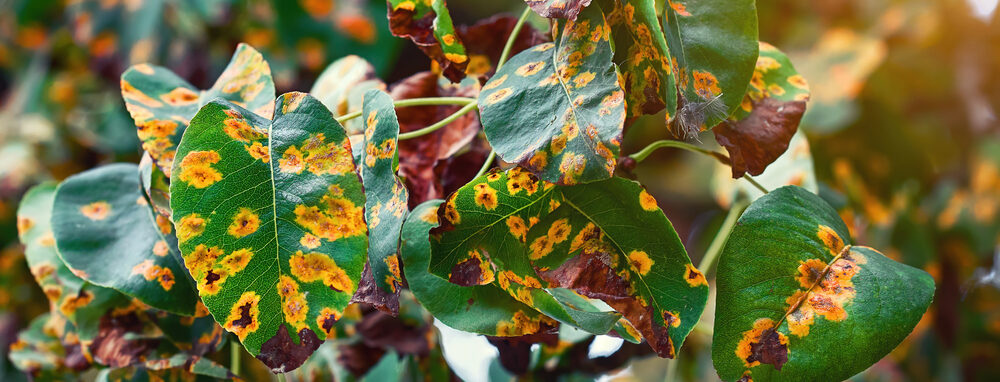
How To Identify, Control & Prevent Rust Fungus
Dealing with rust fungus? Take action against those reddish plant spots. Explore effective solutions and regain your garden's health.
🌱 All important maintenance moments for your lawn during the year. Leave your email and we will send you the lawn calendar for free.
Enter your email
Receive the lawn calendar in the mail
Enjoy a green lawn all year round!

- Order by 2PM = shipped today
- 250.000+ satisfied customers!
- 60 day satisfaction guarantee
Have you noticed reddish, rusty-looking spots on your plant’s leaves? Then, act quickly because it could be rust fungus, and this nasty infection can wreak havoc in even the most fastidiously clean and tidy garden.
- Rust fungus at a glance
- How to recognise rust fungus
- Preferred host plants of rust fungus
- Fighting rust fungi
- Fighting rust fungi with home remedies
- How to prevent rust fungus
- Should I just let rust fungus run its course?
- FAQs
Rust fungus is one of the most commonly found plant diseases in the UK, affecting a wide range of plant life. And what’s more, it’s super-challenging to remove.
But never fear: this article explains how to identify, control, and prevent rust fungus from ruining the look of your beloved garden.
Ready? Let’s get started.
Rust fungus at a glance
Pucciniales, aka rust fungus, belongs to the Basiodiomycota fungi family, comprising 14 principal varieties and 7000 sub-species. Which — let’s face it — suggests that rust fungus is an adaptable and tenacious life-form.
However:
Despite the vast variety of rust fungi that could infect your garden plants, the measures to combat them don’t differ significantly.
How do rust fungi affect the plant?
Regardless of the variety, rust fungus sits on plant leaves, depriving it of essential nutrients. Some varieties are host-specific and only infect certain plant species, while others are more adaptable.
Ultimately, anything that steals a plant’s nutrients tends to prosper while the poor plant suffers.
Indeed, rust fungus infection tends to result in poor growth, leaf discolouration and loss, rotting fruit, and pustules, which can eventually kill the plant if left untreated.
How to recognise rust fungus
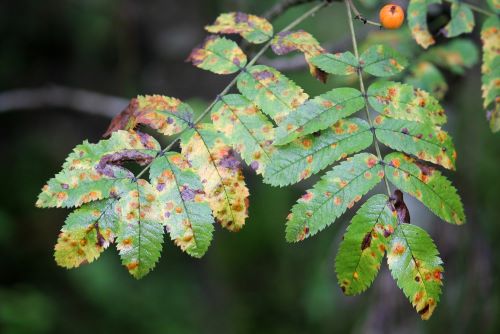
You’ll find evidence of a rust fungus infection mainly on a plant’s leaves. And while symptoms vary from plant to plant, they’re typically characterised by yellow/orange spots on the upper side of leaves, with brown or orange spore deposits underneath the leaves.
Infected leaves will turn yellow and wilt and will eventually shed.
And on closer inspection, you may see tiny white mycelium dots on the leaves.
Preferred host plants of rust fungus
While affecting a whole range of crops and ornamental plants, this common infection is most prevalently found on:
- Roses
- Mallow
- Apple and pear trees
- Chrysanthemums
- Peppermint
- Green beans
- Asparagus
- Beech
- Spruce
- Oak
Fighting rust fungi
Tackling rust infection requires a combination of preventative measures and targeted treatments.
First, cut back the infected plant limbs to healthy foliage, which will help the plant recover over time. However, if the plant is terminally infected, remove it from your garden altogether (and don’t compost it!).
Pluck away infected leaves as soon as you spot them, and sweep away fallen leaves immediately in the autumn, as they can encourage mould around your garden.
Place uninfected fallen leaves in your compost, but never compost affected plant parts.
Once you’ve removed the affected plant parts, treat the surrounding plants with an appropriate fungicide (read on for planet-friendly home remedies). This will help contain the spread of infection.
Fighting rust fungi with home remedies
You can buy chemical fungicides from your local garden centre, but we always recommend environmentally friendly fungicides:
Baking soda
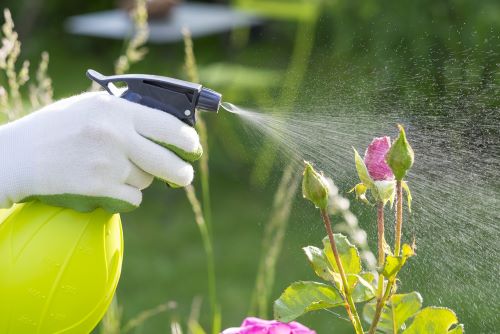
This tried-and-tested treatment is simple to make at home.
Simply mix 1 teaspoon of baking soda with 1 litre of water, then thoroughly spray affected and vulnerable plants. Repeat the application every couple of weeks to maintain control over rust fungus.
Milkshake
Well, it’s not milkshake as we know it! But a solution of milk and water can be a particularly effective home remedy.
Mix one part milk with two parts water, then pour the solution into a spray bottle and spray affected and nearby plants.
Repeat every couple of weeks to maintain protection.
How to prevent rust fungus
The best way to prevent rust fungi in your garden is to choose rust-resistant varieties. There have been enormous strides in plant breeding, especially with roses, so consult your friendly garden centre advisor regarding rust-resistant varieties.
Also, avoid cramming plants into your flowerbeds because crowded beds are susceptible to rust fungus. Allow good air circulation between individual plants.
Finally, keep your plants well watered and feed them regularly with a high-quality fertiliser. This helps keep your plants strong and disease-resistant.
Should I just let rust fungus run its course?
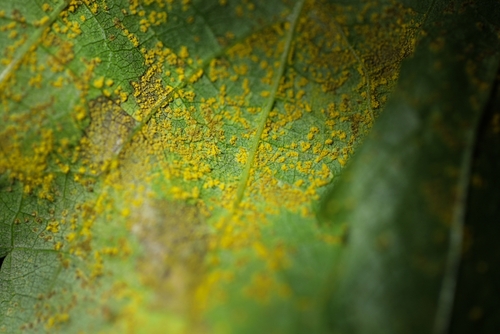
This nasty fungus spreads quickly, so never ignore it. In the worst cases, infection can take over the entire garden, so never delay.
FAQs
Rust fungi spread through airborne spores. This makes this common garden infection particularly transmissible. Remember, fungi prefer moist conditions, so keep a particular eye out for shaded garden corners, which are particularly susceptible to infection.
This common garden fungal infection causes rusty spots on plant foliage but can also spread to stems and fruit. Look out for yellow, orange, red, or brown spots on your plant’s leaves, and remove affected leaves and plant limbs immediately to prevent further spread.
Remove affected foliage and plant limbs to prevent further infection. Never throw infected plant parts in your compost — it will spread the infection throughout your garden. Then, spray the remaining plant with a fungicide or a home remedy. To prevent further infection, allow plenty of air circulation around individual plants in your flowerbeds — never crowd your beds.
Ready to protect your garden?
Rust fungus causes significant garden damage, but you can combat the infection with proper prevention and control.
We hope this article was helpful, but if you have any questions, don’t hesitate to get in touch. Or, if you think you might have another garden infection, check out our Pests and Diseases category in our Help & Advice section.
Happy gardening!
-
How to Grow Eucalyptus in British GardensWith a little love and care, eucalyptus trees can thrive in English gardens. Since they don’t germinate well without proper help, there are not considered invasive. So, there is no reason not to plant them if you enjoy their looks.Read more
-
Transform Your Garden with All-Year-Round Flowering PlantsDid you know you can enjoy blooming flowers even in January? With the right selection of all year round plants, there’s no need to wait until spring to add some colour to your garden.Read more
-
How to Create a Butterfly Garden: A Simple Guide for British GardensThe UK's butterfly population includes 59 different species. These beautiful winged creatures face a steady decline because of habitat loss, pollution and changing weather patterns. Your garden can become a vital link between nature reserves and natural habitats. Let’s explore how.Read more
-
Volcanic Rock Dust for Your Garden—Application and TipsDid you know that volcanic rock dust is a brilliant organic soil improver? This article explains exactly what it's good for and how to use it properly.Read more
-
How to Use Landscape Fabric ProperlyIf weeds or erosion in your garden are troubling you, landscape fabric might be the solution. We’ll explain how and when to use it properly, just keep on reading.Read more
-
Hostas: A Complete Care GuideIf you have a north-facing garden or some shady corners on your property, hostas are the plants for you. These green delights thrive particularly well in partial to full shade and require consistently moist soil to perform at their best.Read more
-
How to Grow Grapes in Your Garden: A Simple Step-by-Step GuideGrapevines produce some tasty fruits, but often they are simply grown for their gorgeous leaves. Whatever your motivation may be, we have a guide on how to grow grapes for you.Read more
-
Worm Composting Made Simple: From Kitchen Scraps to Garden GoldDid you know that a single pound of composting worms can devour half their body weight in waste every day? That's roughly twelve pounds of kitchen scraps transformed into garden gold each month! We will look at how to make this happen.Read more
Leave a comment
Your answer will be displayed on the site and the interested party will be notified by email.
Leave a comment
Have a question or want to share your experience? Leave us a comment.

- Order by 2PM = shipped today
- 250.000+ satisfied customers!
- 60 day satisfaction guarantee

- Order by 2PM = shipped today
- 250.000+ satisfied customers!
- 60 day satisfaction guarantee

- Order by 2PM = shipped today
- 250.000+ satisfied customers!
- 60 day satisfaction guarantee

🌱 All important maintenance moments for your lawn during the year. Leave your email and we will send you the lawn calendar for free.
Enter your email
Receive the lawn calendar in the mail
Enjoy a green lawn all year round!












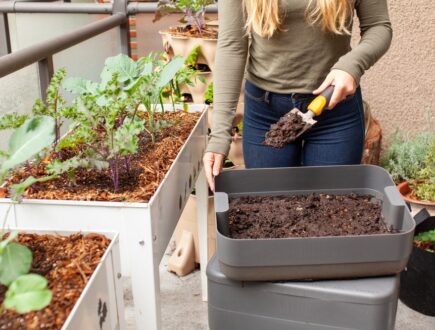








Comments (0)
There are no comments yet. Well then, what are you waiting for to
Be the first to write your comment!inaugurate this pretty page?
Do you have some comments?